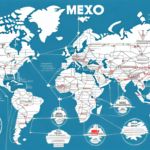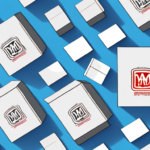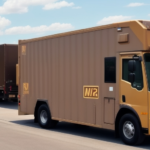Introduction: Choosing the Right Carrier for Shipping to Canada
Shipping packages to Canada involves various considerations to ensure your items arrive safely, on time, and at the best possible cost. This comprehensive comparison between DHL and UPS will delve into their rates, services, transit times, and other critical factors to help you make an informed decision for your shipping needs.
Key Factors Affecting Shipping Rates to Canada
Several elements influence the cost and efficiency of shipping to Canada. Understanding these factors can help you optimize your shipping strategy:
- Package Weight and Size: Shipping rates are largely determined by the weight and dimensions of your package. Heavier and larger packages typically incur higher costs.
- Transit Time: The speed at which you need your package delivered affects the shipping cost. Faster delivery options usually come at a premium.
- Destination: Shipping within major Canadian cities may be more cost-effective compared to remote or rural areas.
- Customs Clearance: International shipments must clear Canadian customs, which can introduce additional fees and delays.
- Seasonal Demand: Rates can fluctuate during peak seasons, such as holidays, due to increased demand.
Additionally, the type of shipping service—express versus standard—and any special requirements like insurance or tracking can influence the overall cost.
Overview of DHL and UPS Shipping Services to Canada
DHL and UPS are renowned for their global shipping capabilities. Here's a breakdown of the services each carrier offers for shipments to Canada:
- DHL:
- DHL Express: Provides expedited international shipping with delivery in 1-3 business days.
- DHL Expedited: A more economical option for less urgent deliveries, typically taking 4-6 business days.
- DHL eCommerce: Tailored for online retailers, offering cost-effective shipping with tracking capabilities.
- UPS:
- UPS Worldwide Express: Guarantees next-day delivery to major Canadian cities.
- UPS Worldwide Expedited: Offers reliable express shipping with delivery in 2-5 business days.
- UPS Standard: A budget-friendly option for non-urgent shipments, delivering within 5-7 business days.
Both carriers provide comprehensive customs clearance services to facilitate smooth entry into Canada, ensuring compliance with local regulations.
Comparing DHL and UPS Rates and Transit Times
Understanding the cost and speed of delivery is crucial when selecting a shipping carrier. Below is a comparison of DHL and UPS based on package size and weight:
| Package Size and Weight | DHL Express | UPS Worldwide Express |
|---|---|---|
| Small Package (1 lb) | $85.75 CAD | $95.07 CAD |
| Medium Package (5 lbs) | $122.88 CAD | $140.23 CAD |
| Large Package (20 lbs) | $277.53 CAD | $314.42 CAD |
While DHL Express tends to be slightly more expensive, it offers competitive transit times. Both carriers provide similar delivery speed for express services, typically ranging from 1 to 3 business days. For detailed and up-to-date rates, it's advisable to use the carriers' online shipping calculators:
Understanding Customs Clearance Procedures
All international shipments to Canada must undergo customs clearance. Here's what you need to know:
- Documentation: Accurate and detailed paperwork, including invoices and descriptions of the shipped items, is essential to prevent delays.
- Duties and Taxes: Depending on the value and type of goods, import duties and taxes may apply. These are typically the responsibility of the recipient unless specified otherwise.
- Restricted and Prohibited Items: Certain items are restricted or banned from entry into Canada, such as firearms, certain food products, and counterfeit goods. Always verify the list of prohibited items before shipping.
Both DHL and UPS offer brokerage services to assist with customs clearance, helping to expedite the process and ensure compliance with Canadian regulations.
For more information on Canadian import regulations, visit the Canada Border Services Agency.
Additional Services Offered by DHL and UPS
Beyond standard shipping, DHL and UPS provide a range of additional services to enhance your shipping experience:
- Insurance: Protects your shipment against loss or damage during transit.
- Package Tracking: Real-time tracking allows you to monitor your shipment's progress.
- Signature Confirmation: Ensures that the package is handed directly to the recipient, providing added security.
- On-Demand Delivery (DHL): Allows recipients to customize delivery preferences, such as changing the delivery date or location.
These services can provide added peace of mind, especially when shipping valuable or sensitive items.
Customer Reviews: Evaluating Reliability and Service Quality
Customer feedback is a valuable indicator of a carrier's reliability and service quality. Both DHL and UPS are generally well-regarded, but there are nuances to consider:
- DHL: Users often praise DHL for its speed and efficient international services. However, some reviews highlight challenges with customer service responsiveness during peak times.
- UPS: UPS receives positive remarks for its robust tracking system and extensive network coverage. On the downside, some customers report higher costs compared to other carriers.
For a broader perspective, you can explore customer reviews on platforms like Trustpilot or the Better Business Bureau.
Conclusion: Making an Informed Decision for Your Shipping Needs
Choosing between DHL and UPS for shipping to Canada depends on your specific requirements, including budget, delivery speed, package size, and additional services. By carefully evaluating the factors outlined above and utilizing the carriers' online tools, you can select the service that best aligns with your shipping goals.
For further assistance, consider consulting with shipping experts or reaching out directly to the carrier's customer service to address any unique concerns or requirements.






















